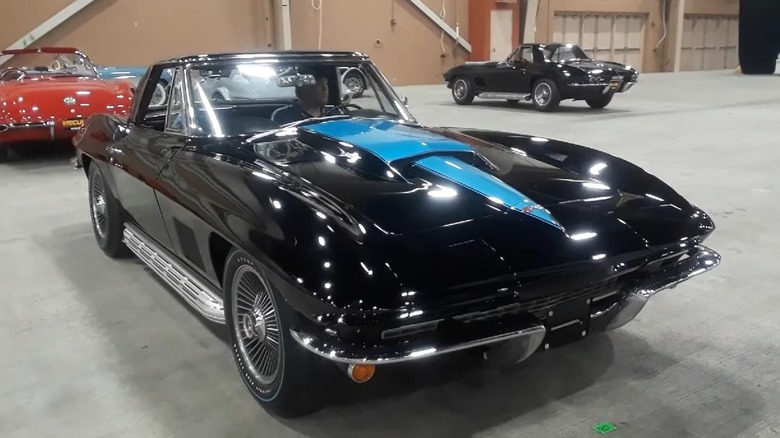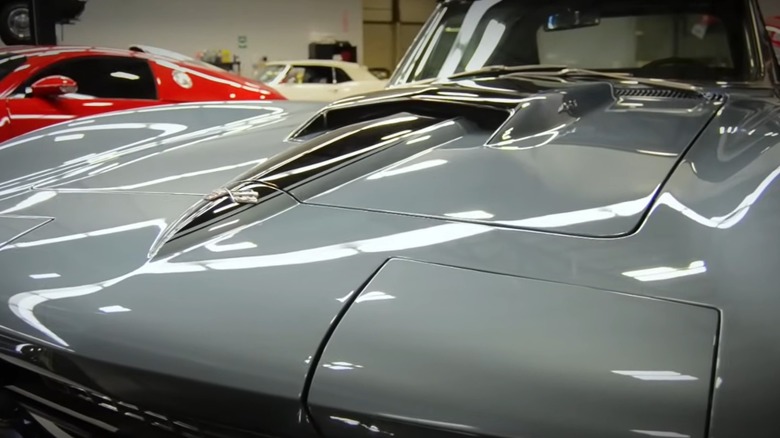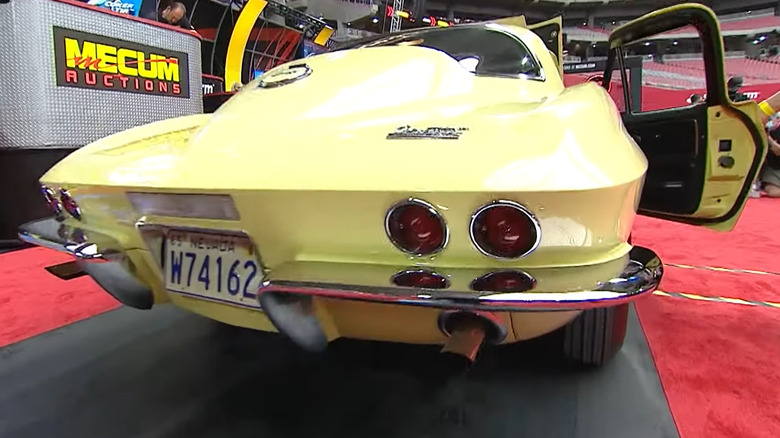Here's What Makes The 1967 Chevrolet Corvette L88 Convertible Such A Big Deal
A November 2022 SlashGear survey has revealed that the coolest Chevy Corvette is the C7 Grand Sport, followed by the C4 Corvette ZR1 and the C5 generation manufactured from 1963 to 1967. On the other hand, the 1963 Corvette Grand Sport is the rarest and possibly most desirable iteration of America's favorite sports car. Only five units exist today, according to Auto Heritage Foundation, and each could easily fetch an eight-figure sum at any auction, provided the lucky owners are willing to part ways with their unicorn Corvettes.
But then again, there's a particular Corvette variant that enthusiasts think of as the baddest in the business, and certainly, one of the quickest 'Vettes to ever leave the factory floor. We're talking about the 1967 Corvette L88, a unique model that bridges the transition from the C2 to the C3 Corvette. Chevrolet only built 20 units of the Corvette L88 (via The Manual), making it almost as rare as the '63 Grand Sport.
Chevy Corvette L88: It's all about the engine
Few Corvettes can boast about their rarity while simultaneously showcasing a shining racing pedigree. It so happens the Corvette L88 fulfills both. The L88 story begins with Zora Arkus-Duntov, a man who turned the Corvette from a ho-hum sports car to a bonafide track star. Arkus-Duntov purposely engineered the C2 Corvette to compete with Europe's best. He developed the fabled 427 cubic-inch L88 big-block V8 engine with Can-Am spec aluminum heads, a stronger crankshaft, an 850 CFM dual feed Holley carburetor, solid lifters, a 12.5:1 compression ratio, and cold air induction (per SuperCars.net), to name just a few of the technical specifications that championed this new class of automotive marvel.
Fed with a healthy diet of 103 high octane racing fuel, the L88 V8 could pump out an astonishing 600 horsepower, good enough to destroy the quarter-mile in about 11 seconds. Moreover, the L88 engine has a heavy-duty four-speed manual gearbox, performance suspension, upgraded brakes, and a Positraction rear differential. The same engine took a class victory at the 1967 12 Hours of Sebring, and it propelled Dick Guldstrand, Bob Bondurant, and Dick Yenko's Corvette L88 Coupe to a new record speed of 171.5 mph on the Mulsanne straight at the 24 Hours of Le Mans (via Corvette Racing Tripod and CorvSport).
GM discouraged clients from purchasing the Corvette L88
Whereas other automakers would do anything to sell their cars, General Motors made an effort to prevent clients from buying the 1963 Chevy Corvette L88. According to CorvSport, GM published the L88's performance ratings at only 435 horsepower. The reason is to sway potential buyers in selecting other engine options like the 427 cubic-inch L71 or the L89 with aluminum heads, which Chevy claims have more horsepower and are about $1,000 cheaper than the L88.
In addition, only select gas stations carried 103 octane racing fuel back in the day, deterring casual buyers from getting their hands on the Corvette L88. The final nail in the coffin is the L88's prohibitive base price, which was about $1,500 more than a base Corvette's sub-$4,200 base price in 1967. But for those who know anything about Chevy racing engines, nothing compares to the L88.
The particular '63 Corvette L88 on this page is one of 20 Corvettes produced in 1967 and has genuine racing provenance. It sold at the Mecum Auction in Dallas in 2013 for an astronomical $3.4 million (via CorvSport). CorvSport adds that four of the top five most expensive Corvettes sold at auction were L88 variants, making this model a very big deal among vintage Corvettes and enthusiasts alike.


